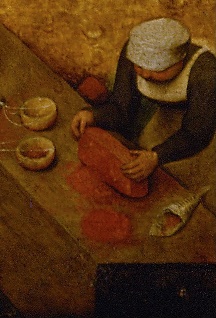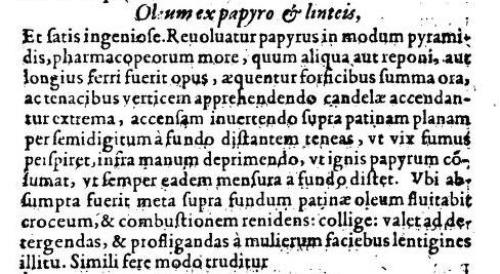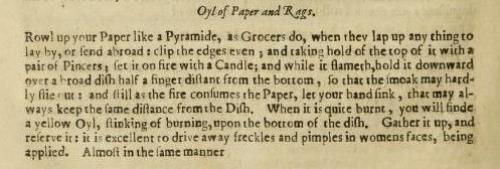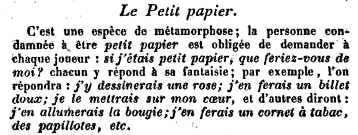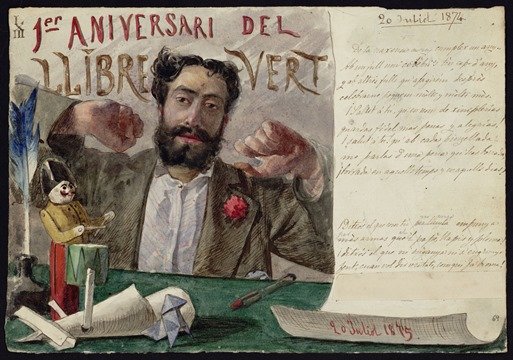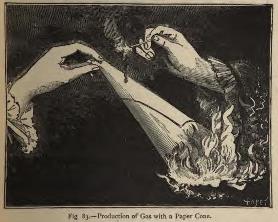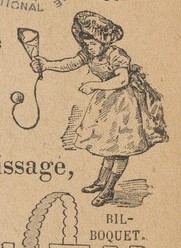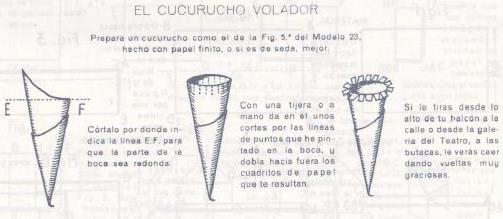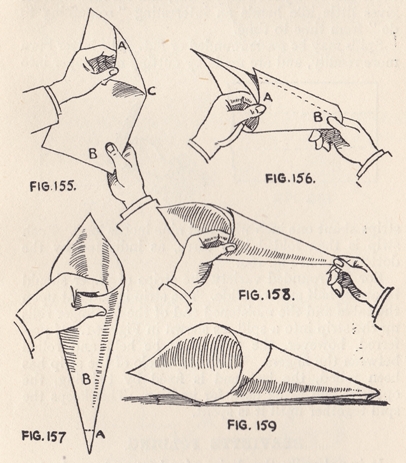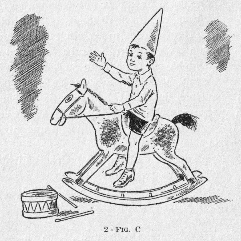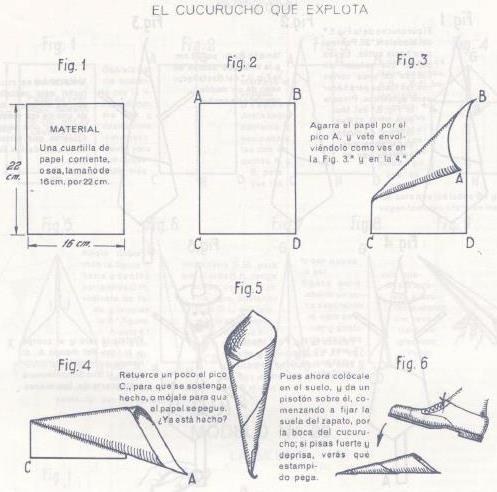| The Public Paperfolding History Project
Last updated 28/4/2024 x |
|||||||
| Paper Cones / Grocer's Cones | |||||||
| This
page is being used to collect information about the
history of Paper Cones, also known as Grocer's Cones.
Please contact me if you know any of this information is
incorrect or if you have any other information that
should be added. Thank you. Paper Cones appear to be among the most versatile of all paper folds. The range of uses they have been put to is little short of astonishing. ********** 1560 A paper cone, which appears to be made from paper that has already been used for some other purpose, can be found in the bottom right corner of the painting 'Children's Games' by Peter Bruegel the Elder which is dated 1560. (Information from Joan Sallas.)
********** 1584 There is mention of papyrus rolled in a pyramid in 'Magiae Naturalis' by Giambattista della Porta (1535-1615), the first four books of which were published in Latin in Naples in 1558 and which was gradually expanded to twenty books by 1584. (From Chapter XI of Book 10 - Of Distillation) The Latin says, 'Let the papyrus be rolled in the form of a pyramid, after the manner of the pharmacists ...'
********** 1658 An English translation of 'Magiae Naturalis', under the title of 'Natural Magick', and giving the author's name as John Baptista Porta, was published in London in 1658 translates the Latin cited above as ' 'Roll up your Paper like a Pyramid, as Grocer's do ...'
********** 1702 onwards - How to Catch Birds Using Paper Cones ********** 1827 There is mention of 'un cornet a tabac' (a tobacco cone) as a possible answer to the question 'If I were a little paper what would you do with me?' in a game called 'Le Petit Papier' which appears in 'Manuel Complet des Jeux de Société' by Elisabeth Celnart, published by La Librairie Encyclopedique de Roret in Paris in 1827.
********** Don Simon - 1875 onwards
********** 1885 An article in La Nature No 605 of January 3rd, 1885, headed 'Les Physiques Sans Appareils' written by Gaston Tissandier, which contained instructions showing how to produce coal gas from an open fire using a paper cone. The same material subsequently in the 5th Edition of 'Les Recreations Scientifiques' by Gaston Tissandier which was published in 1888.
********** 1900 'Mes Jolie Jeux' by Henriette Suzanne Bres, which was published by Librairie Hachette in Paris in 1900, contains an illustration which shows a paper cone being used for a game of bilboquet.
********** 1907 A description of how to make a paper cone appears in an article titled 'El trabajo manual escolar' by Vicente Casto Legua in issue 191 of the Spanish magazine 'La Escuela Moderna' for February 1907, which was published in Madrid by Los Sucesores de Hernando. No illustration is provided. The instructions explain how to make a basic rolled cone and to fold the tip over to seal it, then say, roughly translated, 'If we fold the upper end of the cone inwards and in the opposite we place an oval piece of paper the sides may be rolled inward, resembling a person in a cut down suit.' ********** El cucurucho volador - The Flying Cone - 1907 onwards
********** 1910 A page of trick packages for April Fool Gifts appears in 'Distractions Enfantines' by Marie Koenig, which was published by Librairie Hachette et Cie in Paris in 1910. These wrappings include (bottom right) a cone for tobacco, powder, salt or pepper. The same book also includes mention of using paper cones to make bowls for paper pipes and chimneys for cardboard houses. ********** 1923 Instructions for making a Grocer's Cone appear in 'More Paper Magic' by Will Blyth, which was published by C Arthur Pearson in London in 1923.
********** 'Trabajos Manuales y Juegos Infantiles' by Francisco Blanch, which was published by I. G. Seix y Barral Hermanos S.A.- Editores in Barcelona in 1923, shows how to make 'Papelinas' and how one can be used as a hat.
********** 'El cucurucho que explota' or The Exploding Cone - 1939 This design occurs in 'El Mundo de Papel' by Dr Nemesio Montero, which was published by G Miranda in Edicions Infancia in Valladolid in 1939.
********** 1961 A method of sealing a paper cone in 'Wir Falten' by Joachim Schönherr and Gerta Schumann, which was published by Rudolf Arnold Verlag in Leipzig in 1961. ********** |
|||||||
